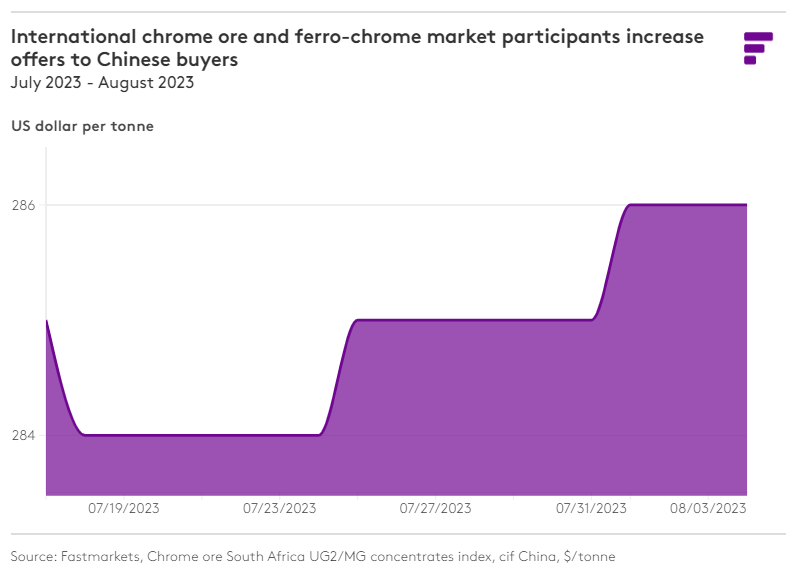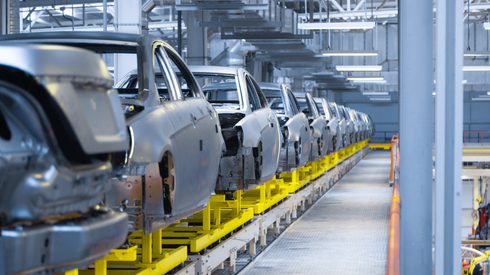China’s National Development and Reform Commission (NDRC) on Monday July 31 said that the Chinese government was attempting to bolster the economy by removing state-level restrictions on car purchase limits, improving the country’s electronic vehicle (EV) charging infrastructure as well as rejuvenating old buildings in rural regions.
This is on the back of another announcement on Friday July 28 that focused on boosting the manufacturing of consumer goods.
Property market in doldrums
But market participants are skeptical about the impact of these measures when it comes to supporting the property sector.
The value of new home sales by China’s top 100 real estate developers tumbled by 33.1% year on year in July to 350 billion yuan ($49 billion).
Private developers are also deep in debt with no visible path to recovery, with more defaults expected in the coming months, according to a Singapore-based trader.
“For example, the shares of Country Garden, one of the largest property developers in the country, continued to plunge in late July on renewed debt fears,” he said.
Deep-rooted issues in China’s property sector are expected to weigh on domestic construction-led steel consumption for the coming years with no end in sight, with past efforts by the Chinese government to boost property sales achieving limited success.
An Anhui-based mill source said that measures to stimulate consumption might have the limited effect of supporting demand for iron ore and steel in the short term, despite them including guidance on supporting first-time home buyers and on improving their housing situation.
“It takes time to see how the measures to improve consumption take effect in the next few months, and it’s also hard to see direct support for spot steel consumption from these stimulus measures,” the same source said.
A trader who deals in rebar in Shanghai said the stimulus package did not move both sellers and buyers. “Before discussing expanding demand, the first step is to increase residents’ income. Otherwise, no one dares to spend a large amount of money on consumption, especially [for something like] buying a house,” the trader said.
Market sentiments in alloys improve, but concerns remain
Four measures announced by the NDRC are aimed at stimulating consumption: optimizing the purchase of automobile vehicles, expanding consumption of new energy vehicles, supporting rigid demand for houses and enhancing consumption of home appliances and electronic products.
All these are in favor of ferro-alloy products, which are used in the production of stainless steel, common carbon steel and special steel, among others.
“Ferro-chrome producers raised prices after the announcement of the stimulus,” one Chinese ferro-chrome trader said, “because they foresee rising stainless steel demand from the automobile and home appliances sectors.”
Fastmarkets’ weekly price assessment for ferro-chrome spot 6-8%, basis 50% Cr, ddp China was 8,700-8,900 yuan ($1,215-1,243) per tonne on Tuesday August 1, narrowing upward by 100 yuan per tonne from a week earlier.

Even international chrome ore miners and ferro-chrome suppliers increased their offers in the latest round of quotations to Chinese buyers, industry participants said.
Fastmarkets’ weekly chrome ore, South Africa UG2/MG concentrates index, cif China was $286 per tonne on Tuesday August 1, up by $1 per tonne (0.35%) from a week earlier.
“I’ve heard that the latest offer in the seaborne market is no less than $290 per tonne after the stimulus was announced,” a Chinese chrome ore buyer source said on Tuesday.
Meanwhile, Fastmarkets’ price assessment for ferro-chrome 50% Cr import, cif main Chinese ports was $0.97 per lb on the same day, up by $0.01 per lb (1.04%) week on week.
This snapped a downtrend that began since June 13 when the price was at $1.04 per lb.
Chrome ore is used to produce ferro-chrome, which is mostly used in the production of anti-corrosion and oxidation-resistant stainless steel.
Prices for silico-manganese, another bulk ferro-alloy product, also moved up in both the futures and spot markets.
“The futures contract of silico-manganese responds quickly to policies,” a manganese trader said. “It then props up the spot market.”
But there are still concerns about the effect of the measures announced by the NDRC.
“The alloys markets will strengthen, but how long can the robust market be sustained is unclear,” the manganese trader said.
“We are worried about whether the policies can be fully implemented or how much end demand for steel products can be added,” he added.
Despite improving market sentiment following the announcement of the stimulus, China’s ferro-silicon prices are not showing any signs of a recovery, having been declining since the beginning of this year, mainly due to weakened steel demand, a restart of furnaces in Ningxia Hui autonomous region and lower power costs in some production hubs.
“Most ferro-silicon producers are still cautious after the announcement because they are not sure these will be carried out in different cities,” a Chinese ferro-silicon trader said.
Another ferro-silicon trader told Fastmarkets that the current spot market was largely affected by news of crude steel production cuts, which caused downstream buyers to put in lower bids.
The same source added that even though the spot market was slightly boosted by rising ferro-silicon futures, the actual number of deals remains thin, and the market is still, by and large, oversupplied.
Looming crude steel production cuts
Imminent production cuts in crude steel output for the rest of 2023 are a bigger factor tempering the outlook of market participants in ferrous sectors, according to a second Singapore-based trader.
Market chatter regarding the production curbs emerged in mid-July after data showing China’s crude steel output in the first half of 2023 was published.
China produced 536 million tonnes of crude steel in the first six months of this year, up by 1.3% from a year earlier.
A second Shanghai-based trader told Fastmarkets that crude steel output targets for 2023 had been discussed in a meeting between representatives of Chinese provincial governments and top executives in Beijing in late July.
“There is word going around that Hebei province is expected to reduce crude steel output by 6 million tonnes compared with last year, alongside 4.5 million tonnes for Shandong province, and 6.8 million tonnes for Jiangsu province,” a Xiamen-based trader said.
Some mills have been instructed to reduce current output by about 10-20% in August, with further cuts planned toward the end of the year
“Some mills have been instructed to reduce current output by about 10-20% in August, with further cuts planned toward the end of the year,” the trader added.
In late July, local authorities in Yunnan issued a notice to enforce a province-wide cap on crude steel output not to exceed volumes produced a year earlier.
However, a few sources pointed out that most steel mills would take some time to carry out production cuts, especially those in large steel-producing provinces. This could provide some short-term support to iron ore prices.
“But traders are taking a cautious approach with purchases in the seaborne iron ore market since they have yet to see any confirmation [of the crude steel production cuts] from the big steelmaking provinces,” a third Shanghai-based trader said.





